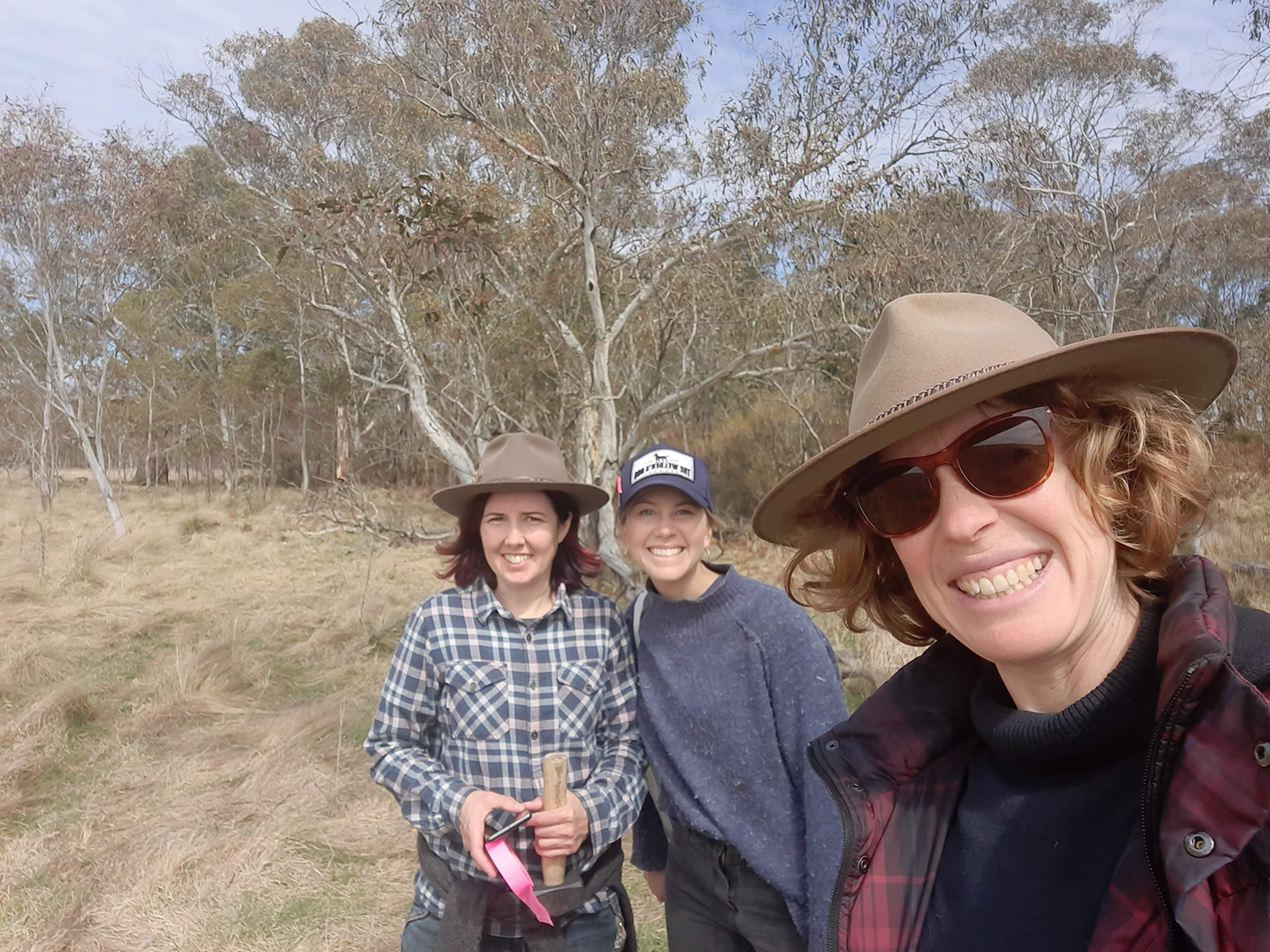Mulloon’s education team (l-r) –Tam, Erin and Laura, planning out the Sandhills Creek catchment works at Birkenburn (the Stream Team!)
Landtasia and Duralla approval process
The Mulloon Rehydration Initiative (MRI) is moving into its final phases as it relates to the National Landcare Program (NLP) funded component. While the Initiative is a long-term project, the NLP funding component was designed to support the implementation of onground works, the set up of a comprehensive monitoring program, and the development of a capacity building program aimed at raising the awareness and the skills of all comers in the concept of landscape rehydration.
The Mulloon Rehydration Initiative is a catchment-scale project that aims to rebuild the natural landscape function of the Mulloon catchment and boost its resilience to climatic extremes for more reliable stream flows, improved ecosystem functioning and enhanced agricultural productivity. It includes the development and implementation of a comprehensive Integrated Monitoring Plan.
Over the past few months work has been undertaken to gain onground works approval on a further two properties – Landtasia and Duralla. The process of planning and government approval is time consuming and expensive. Full ecological assessment of each site of proposed intervention is required, as well as complete, to scale, designs. Hydraulic modelling is required to determine current forces acting on the creek system and how those forces will change once work in the creek is undertaken.
With all the planning work done for Landtasia and Duralla, several NSW Government agencies will now each, and individually, assess the veracity of the proposed scheme from their own disciplinary perspective. If and when approved, the next stage will be construction, which, relatively speaking takes a fraction of the time that the approval process takes.
Sandhills Creek catchment planning
In the meantime, the Mulloon team is getting on with the next stage of the Initiative, which is the planning and assessment of Sandhills Creek catchment, a major tributary of Mulloon Creek. This is exciting because the Sandhills planning phase is being coupled with the piloting of the advanced landscape rehydration curriculum being developed by Mulloon’s education team.
In November, professionals from all over Australia will gather at Mulloon to undertake a four-day Intensive learning program in catchment planning where Sandhills Creek, and specifically the Birkenburn property of Tom Gordon and Martina Shelley, will be the case study for the catchment planning exercise. The results of the work from the Intensive will feed directly into the Government approval process for proposed landscape rehydration works in and around Sandhills Creek.
Figure 1: Lower Mulloon stream gauge (part of the MRI monitoring array), showing seven and a half years of stream depth measurements.
Monitoring demonstrates that Mulloon Creek is holding its water
Meanwhile, the climatic conditions have flipped once again from very wet to very dry. Landscape rehydration works aim to moderate the extremes of wet and dry. Some interesting trends in this regard are beginning to emerge from the hydrographic data being collected at Mulloon.
The graph above (Figure 1) shows the stream level for the last seven years as Mulloon Creek flows into Duralla from Palerang. Upstream of this point around 50 streambed control structures (leaky weirs) were installed between 2006 as part of the original pilot project on the MCNF Home Farm and during 2020 as part of the MRI on-ground works.
Note that in August 2020, the water level rose about 800mm. This was because a leaky weir was installed immediately below the pond in which this stream gauge is located.
Between August 2020 and November 2022, Mulloon Creek, along with the rest of the east coast of Australia, experienced much flooding, which can be seen in the high concentration of flow peaks during that period.
Since the beginning of 2023, rainfall has been less than half of the long-term average, and yet the water level, and consequently the flow, coinciding with this stream gauge has remained stable. Its early days for this dry cycle, but indications are positive that not only is more water being held in the system, but more water is also continuing to flow down stream than was the case during the previous dry cycle between 2018 and 2020.
The Mulloon Rehydration Initiative is jointly funded through the Mulloon Institute and the Australian Government’s National Landcare Program and is supported by the NSW Government’s Environmental Trust.

